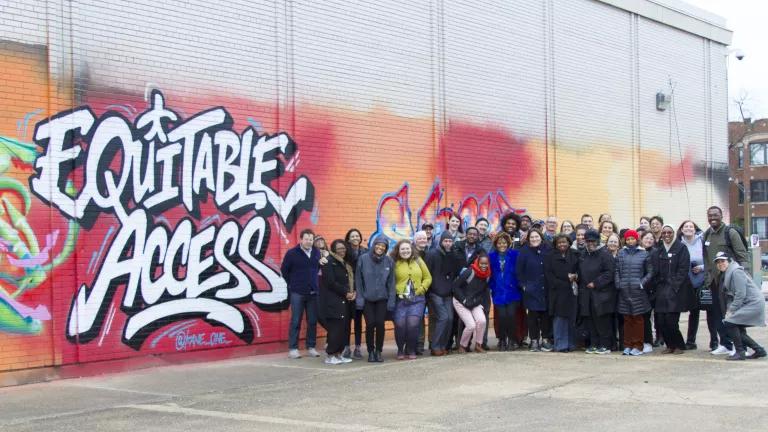Coloradans Deserve to Move More Freely and Breathe Easier
Colorado's plans for cutting greenhouse gas pollution from transportation should prioritize benefits for communities most burdened by freeways and poor air quality.

Investing in clean transit would help deliver more clean air days in Colorado.
David Wilson via Flickr
NRDC is asking CDOT to adopt a strong rule that meets our climate goals and advances equity. The public comment period is open through October 15, 2021. You can find out more about the rule and how to give your feedback at this link.
The Colorado Department of Transportation (CDOT) is proposing a new greenhouse gas reduction rule this fall that would require the state and its regions to cut climate-warming pollution from transportation by investing more in sustainable mobility options. This could be a national model for state action on climate pollution from the transportation sector, but the proposed rule needs to more strongly prioritize communities that have been most harmed by the state’s past transportation infrastructure decisions.
What would that look like?
Colorado’s emissions reduction plan depends on cutting driving miles by 10% in the next ten years. That may not sound like much, but it's an ambitious and necessary shift from the status quo of widening highways and encouraging more and more driving.
First, the new CDOT rules should work to shift state and regional transportation investments towards sustainable mobility options that support healthy communities while cutting air pollution and traffic. Those options could include passenger rail, bus rapid transit, bike-share, safe walking and biking paths and encouraging more housing near jobs to shorten commutes.
At the same time, we need to stop making the problem worse by widening freeways that simply add more congestion to the roads and pollution into the air. A recent study found that CDOT’s 10-year plan would add 70,000 cars to the state’s roads.
Imagine if instead of doubling down on gridlocked highways, we built out complete networks of mobility that allow people to get around their communities by foot or bike or public transit in a way that matches the mobility they can have in their cars.
How does CDOT’s proposal stack up?
The draft includes several elements critical to achieving the state’s climate and clean air goals, including:
- Committing to reduce reliance on driving by investing in climate-friendly transportation options
- Tying CDOT funding to compliance with the standard
- Including regional planning organizations across the state to maximize impact
As CDOT revises the draft over the next few months based on public input, NRDC is looking for the following improvements:
- Developing public participation and decision-making processes that centers equity
- Including environmental justice as a critical element in policy development to reduce pollution in disproportionately-impacted communities
- Setting more ambitious pollution reduction targets
- Strengthening compliance and enforcement mechanisms
How did we get here?
In 2019 Colorado took a bold step to confront climate change in the face of the Trump Administration’s attempts to roll back efforts at the federal level. House Bill 1261 put in place Colorado’s greenhouse gas (GHG) reduction targets of 26% by 2025, 50% by 2030, and 90% by 2050. Two years later, 2021 presents exciting opportunities for Colorado to become a leader in cutting carbon pollution, creating cleaner air and making the state more accessible to all.
Where does that road to a zero-carbon, healthier and more equitable state start? On the roads and rails we ride on every day. Transportation is now the leading source of carbon emissions in Colorado, and the majority of those transportation emissions are from passenger cars.

Colorado GHG emissions by sector
Cutting transportation emissions will be a significant undertaking, but it’s one that presents the opportunity to invest in clean and affordable mobility for all.
The key next step in implementing the Roadmap is that the Colorado Department of Transportation (CDOT) is crafting targets and regulations for reducing GHG from the transportation sector for the entire state as well as each of the regions. CDOT released a draft proposal in August that NRDC and allies are now focused on making it as strong as possible
NRDC and a coalition of advocates are urging CDOT to use this moment to create an ambitious, accountable and equitable plan for cutting carbon emissions.
What’s next?
Coloradans can submit public comments to dot_rules@state.co.us through October 15, 2021. And CDOT is holding public workshops across the state.
- September 17, Grand Junction
- September 23, Denver
- September 24, Colorado Springs
- September 27, Littleton
- September 29, Limon
- September 30, Fort Collins
- October 4, Glenwood Springs
- October 5, Firestone
- October 7, Durango




